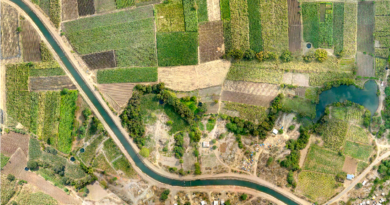10 Ways Drones Are Being Used for Waste Management
Guest post by Emily Folk
Waste management is a crucial part of maintaining a clean and well-functioning society. As humans produce more waste, this can be a challenging task, but drones can help. As this technology becomes more prevalent, more companies and governments realize the potential of drones for waste management.
Uncrewed aerial vehicles offer cost-effective and convenient solutions for many issues. Here are ten ways waste management organizations are using drones right now:
1. Collecting Garbage
The University of Vigo in Spain has developed a garbage-collecting drone to clean litter from beaches. Littered plastics can harm marine wildlife, but finding and collecting them by hand is labor-intensive and inefficient. Drones can cover the same area in a fraction of the time, speeding up the litter collection process.
2. Monitoring Wastewater Treatment
Water is essential to many industrial processes, which create vast amounts of wastewater. Drones can monitor water quality using specialized cameras to help companies track this waste. This information allows organizations to determine how to best employ wastewater treatment processes.
3. Cleaning Power Lines
A power company in China uses flamethrower-equipped drones to clean electric lines. Garbage on these wires presents a potential hazard, but climbing a ladder to clean them by hand can also be dangerous. Drones provide a safer and faster solution to clearing this hazardous debris.
4. Enforcing Litter Laws
Collecting litter is helpful, but authorities also need to stop people from littering in the first place. Some areas use drones to watch locations of frequent littering to catch people in the act. Using these machines to handle this issue also allows police officers to focus on other, more pressing matters.
5. Combatting Illegal Industrial Waste
Litter isn’t the only kind of illegal waste that drones can deter. In most areas, laws regulate industrial waste disposal, and some governments use drones to enforce these regulations. Drones offer fast and convenient ways of checking companies’ disposal techniques so authorities can reduce illegal dumping efficiently.
6. Observing Protected Areas
One of the most critical parts of waste management is ensuring the safety of protected environmental areas. Some landfills and recycling centers use drones to watch these locations to ensure they don’t unintentionally pollute them. Drones allow these companies to guarantee the protection of nearby environments without leaving the office.
7. Monitoring Methane Emissions
Solid waste landfills are the third-largest source of methane emissions in the U.S. Since too much methane can harm the environment, some landfills use drones to monitor their methane emissions. Methane is odorless and colorless, so thermal camera-equipped drones allow companies to see it from a safe distance.
8. Mapping Landfills
To build a landfill safely, companies need to be sure they plan it well so it doesn’t harm the surrounding environment. Drone mapping reduces the time it takes to plan and organize a new waste management facility. The bird’s-eye view that drones offer also gives these businesses insights they may not have otherwise.
9. Calculating Landfill Capacity
Laws require landfills to keep waste below a specific level of elevation, so sometimes they have to overfill cells. Drones can help landfill owners determine which cells to fill without causing a collapse. Since drones can move in all directions, they can give companies accurate 3D models to visualize this process.
10. Managing Cells
Landfills often fill individual cells as much as possible to make the most of their space. With the help of drones, they can better calculate compaction rates to determine how much to fill each cell. Without drones, this process can take a long time or be inaccurate.
Drones Offer Significant Potential
Companies are only starting to scratch the surface of using drones for waste management. From monitoring to cleanup, these machines offer vast potential in this area. With more advanced technology and increasingly widespread use, drones could revolutionize waste management.
Bio:
Emily is a green tech writer who covers topics in renewable energy and sustainable design. You can read more of her work on her blog, Conservation Folks.
*Cover image source: propelleraero.com

